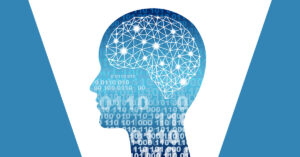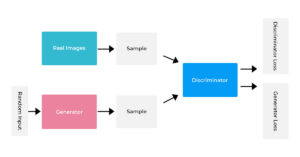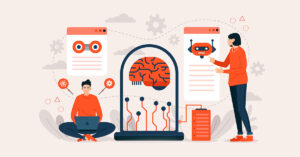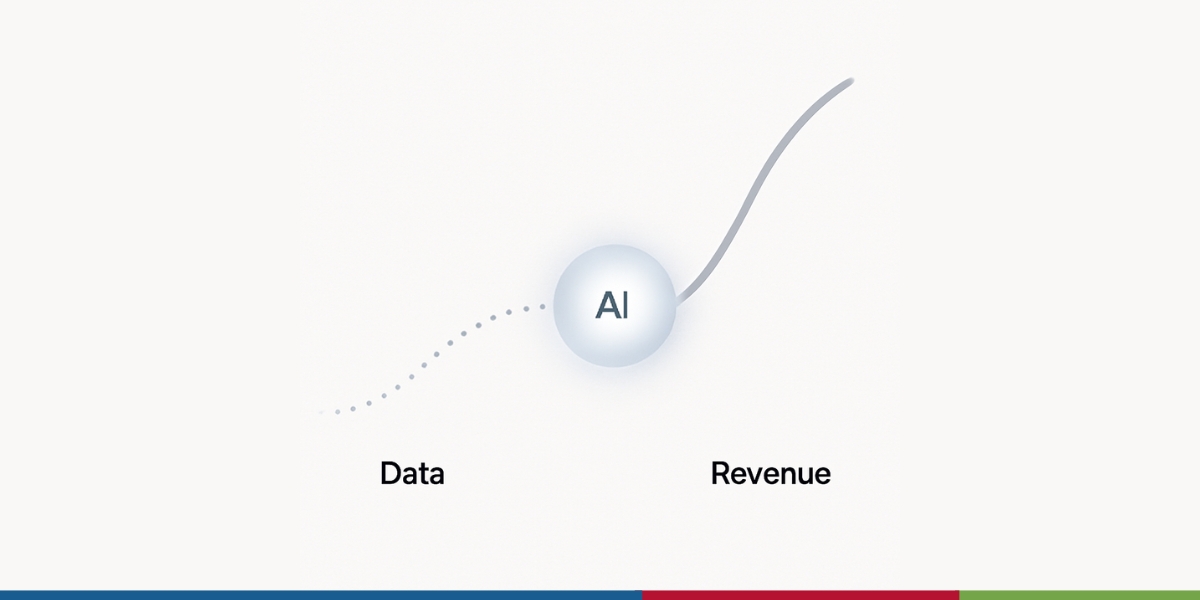When Generative Artificial Intelligence becomes Creative…

4 min read | By Postpublisher P | 22 August 2022 | Technology
Artificial Intelligence is like the quirky mouse in ‘Who moved my cheese’ making inroads into every part of our lives. We already know that AI has the power to solve problems in the business community. But, let us take a turn for a change, and answer the ultimate question – What if AI gets creative?
In recent years, we find that humans and computers have begun to work close enough. Computer scientists have been tackling new problems everyday ever since AI was invented in the early 1950s. During the incident of Covid, AI played a crucial role in drug discovery. At the start of Covid pandemic, medical experts felt hard pressed to find a drug immediately to treat Covid. If not for Artificial Intelligence, we would never have found the drug as fast as we did.
It’s interesting to imagine AI as the optimistic mouse trying to find good cheese for us all. AI is remarkable in providing solutions that we thought would never be possible. But, can AI really think creatively and generate content like humans do? Let’s see what the mouse has to say.
Talking about AI thinking creatively, we should first understand what is generative AI?
 There are use cases where new content is required for a solution. For example, someone might have a black and white picture, and want to change it into colour. The goal here is to create plausible content as though created by humans. Let’s introduce and walk through generative AI.
Generative Artificial Intelligence is an unsupervised learning model that creates new content. Generative AI uses the source content like text, images and videos to create plausible content just like humans do. The idea is that generative AI recognizes the underlying input patterns, and uses the same pattern style to generate new data – one such model is the Generative Adversarial Network that we will discuss.
There are use cases where new content is required for a solution. For example, someone might have a black and white picture, and want to change it into colour. The goal here is to create plausible content as though created by humans. Let’s introduce and walk through generative AI.
Generative Artificial Intelligence is an unsupervised learning model that creates new content. Generative AI uses the source content like text, images and videos to create plausible content just like humans do. The idea is that generative AI recognizes the underlying input patterns, and uses the same pattern style to generate new data – one such model is the Generative Adversarial Network that we will discuss.
 Generative Adversarial Network (GAN) is one kind of generative AI that creates new data. It’s actually pretty interesting to see the way GAN works. To understand better, think of a GAN as a counterfeiter and police, both playing cat and mouse game. The GAN uses two neural networks that pit against each other – a generator and a discriminator.
The generator neural network is responsible for creating new data that is similar to the source. While the discriminator network is responsible for differentiating between the new data and the source.
In a cycle of alternating patterns, the generator creates new data and the discriminator separates the fake data from real. Like in a cat and mouse game, the counterfeiter passes fake money, and the police detect fake ones. While this cycle continues, over time they both get better and the discriminator detects fake from real, thus able to create plausible content. In the end, GAN creates content which is human-like.
According to Gartner, generative artificial Intelligence is listed to be the top strategic technology trend. It is estimated that 10% of all content within a few years will be produced by generative AI. With this in mind, let’s look at a few interesting applications involving generative AI.
Generative Adversarial Network (GAN) is one kind of generative AI that creates new data. It’s actually pretty interesting to see the way GAN works. To understand better, think of a GAN as a counterfeiter and police, both playing cat and mouse game. The GAN uses two neural networks that pit against each other – a generator and a discriminator.
The generator neural network is responsible for creating new data that is similar to the source. While the discriminator network is responsible for differentiating between the new data and the source.
In a cycle of alternating patterns, the generator creates new data and the discriminator separates the fake data from real. Like in a cat and mouse game, the counterfeiter passes fake money, and the police detect fake ones. While this cycle continues, over time they both get better and the discriminator detects fake from real, thus able to create plausible content. In the end, GAN creates content which is human-like.
According to Gartner, generative artificial Intelligence is listed to be the top strategic technology trend. It is estimated that 10% of all content within a few years will be produced by generative AI. With this in mind, let’s look at a few interesting applications involving generative AI.
 Generative AI is used immensely in image to image conversion. It’s possible to convert a black and white photo into colour or a photograph into an artistic painting, and satellite images into Google map views.
Generative AI is capable of converting low resolution images into high resolution. Videos are dramatically improvised by generating more frames per second for a sharper and colourful picture.
Generative AI is used immensely in image to image conversion. It’s possible to convert a black and white photo into colour or a photograph into an artistic painting, and satellite images into Google map views.
Generative AI is capable of converting low resolution images into high resolution. Videos are dramatically improvised by generating more frames per second for a sharper and colourful picture.
 Generative Artificial Intelligence aids in creating prosthetic limbs. It’s beyond the limitation of humans to design limbs that are precise. Through monitoring the limb and body movements by IOT devices, generative AI is able to create prosthetic limbs, a boon for the medical community and patients.
Generative Artificial Intelligence aids in creating prosthetic limbs. It’s beyond the limitation of humans to design limbs that are precise. Through monitoring the limb and body movements by IOT devices, generative AI is able to create prosthetic limbs, a boon for the medical community and patients.
 Neural networks work fabulously well to generate proteins and simulate combinations that help to discover drugs for diseases. Pharmaceutical companies are hugely benefited through the AI enabled drug discovery. It’s possible to discover effective drugs in a fast and efficient way.
Neural networks work fabulously well to generate proteins and simulate combinations that help to discover drugs for diseases. Pharmaceutical companies are hugely benefited through the AI enabled drug discovery. It’s possible to discover effective drugs in a fast and efficient way.
 The DNA of the design industry is creativity. Did you ever think how the design activity can be impacted if AI generative design is augmented? It’s a scenario of new possibilities with brilliant designs to solve the design problems. Humans can interact with AI to choose the best design outputs, make edits and get work done faster and effective.
The DNA of the design industry is creativity. Did you ever think how the design activity can be impacted if AI generative design is augmented? It’s a scenario of new possibilities with brilliant designs to solve the design problems. Humans can interact with AI to choose the best design outputs, make edits and get work done faster and effective.
What is Generative AI?
 There are use cases where new content is required for a solution. For example, someone might have a black and white picture, and want to change it into colour. The goal here is to create plausible content as though created by humans. Let’s introduce and walk through generative AI.
Generative Artificial Intelligence is an unsupervised learning model that creates new content. Generative AI uses the source content like text, images and videos to create plausible content just like humans do. The idea is that generative AI recognizes the underlying input patterns, and uses the same pattern style to generate new data – one such model is the Generative Adversarial Network that we will discuss.
There are use cases where new content is required for a solution. For example, someone might have a black and white picture, and want to change it into colour. The goal here is to create plausible content as though created by humans. Let’s introduce and walk through generative AI.
Generative Artificial Intelligence is an unsupervised learning model that creates new content. Generative AI uses the source content like text, images and videos to create plausible content just like humans do. The idea is that generative AI recognizes the underlying input patterns, and uses the same pattern style to generate new data – one such model is the Generative Adversarial Network that we will discuss.
Generative Adversarial Network
 Generative Adversarial Network (GAN) is one kind of generative AI that creates new data. It’s actually pretty interesting to see the way GAN works. To understand better, think of a GAN as a counterfeiter and police, both playing cat and mouse game. The GAN uses two neural networks that pit against each other – a generator and a discriminator.
The generator neural network is responsible for creating new data that is similar to the source. While the discriminator network is responsible for differentiating between the new data and the source.
In a cycle of alternating patterns, the generator creates new data and the discriminator separates the fake data from real. Like in a cat and mouse game, the counterfeiter passes fake money, and the police detect fake ones. While this cycle continues, over time they both get better and the discriminator detects fake from real, thus able to create plausible content. In the end, GAN creates content which is human-like.
According to Gartner, generative artificial Intelligence is listed to be the top strategic technology trend. It is estimated that 10% of all content within a few years will be produced by generative AI. With this in mind, let’s look at a few interesting applications involving generative AI.
Generative Adversarial Network (GAN) is one kind of generative AI that creates new data. It’s actually pretty interesting to see the way GAN works. To understand better, think of a GAN as a counterfeiter and police, both playing cat and mouse game. The GAN uses two neural networks that pit against each other – a generator and a discriminator.
The generator neural network is responsible for creating new data that is similar to the source. While the discriminator network is responsible for differentiating between the new data and the source.
In a cycle of alternating patterns, the generator creates new data and the discriminator separates the fake data from real. Like in a cat and mouse game, the counterfeiter passes fake money, and the police detect fake ones. While this cycle continues, over time they both get better and the discriminator detects fake from real, thus able to create plausible content. In the end, GAN creates content which is human-like.
According to Gartner, generative artificial Intelligence is listed to be the top strategic technology trend. It is estimated that 10% of all content within a few years will be produced by generative AI. With this in mind, let’s look at a few interesting applications involving generative AI.
Image processing
 Generative AI is used immensely in image to image conversion. It’s possible to convert a black and white photo into colour or a photograph into an artistic painting, and satellite images into Google map views.
Generative AI is capable of converting low resolution images into high resolution. Videos are dramatically improvised by generating more frames per second for a sharper and colourful picture.
Generative AI is used immensely in image to image conversion. It’s possible to convert a black and white photo into colour or a photograph into an artistic painting, and satellite images into Google map views.
Generative AI is capable of converting low resolution images into high resolution. Videos are dramatically improvised by generating more frames per second for a sharper and colourful picture.
Medical Science
 Generative Artificial Intelligence aids in creating prosthetic limbs. It’s beyond the limitation of humans to design limbs that are precise. Through monitoring the limb and body movements by IOT devices, generative AI is able to create prosthetic limbs, a boon for the medical community and patients.
Generative Artificial Intelligence aids in creating prosthetic limbs. It’s beyond the limitation of humans to design limbs that are precise. Through monitoring the limb and body movements by IOT devices, generative AI is able to create prosthetic limbs, a boon for the medical community and patients.
Drug Discovery
 Neural networks work fabulously well to generate proteins and simulate combinations that help to discover drugs for diseases. Pharmaceutical companies are hugely benefited through the AI enabled drug discovery. It’s possible to discover effective drugs in a fast and efficient way.
Neural networks work fabulously well to generate proteins and simulate combinations that help to discover drugs for diseases. Pharmaceutical companies are hugely benefited through the AI enabled drug discovery. It’s possible to discover effective drugs in a fast and efficient way.
Generative Design AI
 The DNA of the design industry is creativity. Did you ever think how the design activity can be impacted if AI generative design is augmented? It’s a scenario of new possibilities with brilliant designs to solve the design problems. Humans can interact with AI to choose the best design outputs, make edits and get work done faster and effective.
The DNA of the design industry is creativity. Did you ever think how the design activity can be impacted if AI generative design is augmented? It’s a scenario of new possibilities with brilliant designs to solve the design problems. Humans can interact with AI to choose the best design outputs, make edits and get work done faster and effective.
Wrap-up
We have witnessed the power of AI in a crisis situation like the recent pandemic to help medical experts discover drugs. The power of AI to generate new data has found its application in the medical field, banking sectors, AI generative design, entertainment and many more. AI serves as the creative force to create plausible and useful content. We live in interesting times where AI begins to influence humanity in unimaginable ways. There is more truth if we say that AI makes our world more efficient and our lives better. Get the right advice from the leading experts to solve your business challenges through the versatility of artificial intelligence.The latest from our editors
Join over 150,000+ subscribers who get our best digital insights, strategies and tips delivered straight to their inbox.


